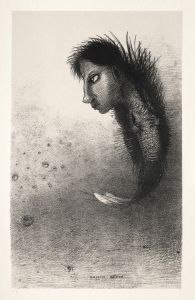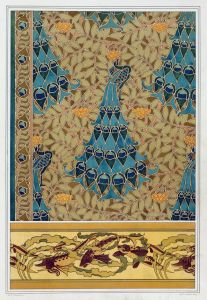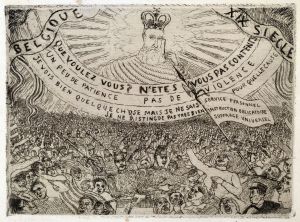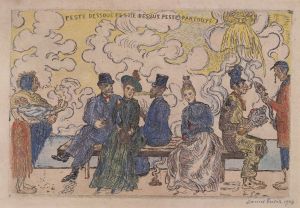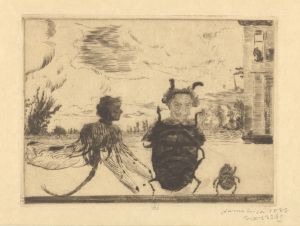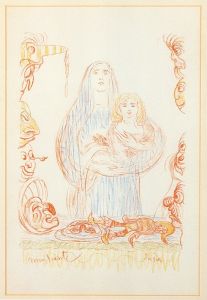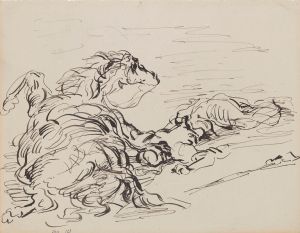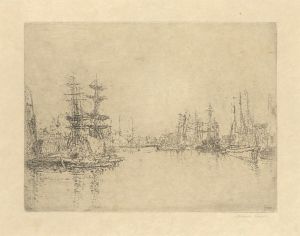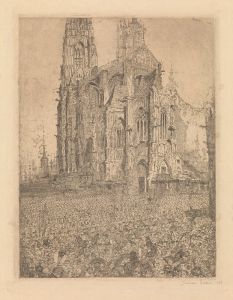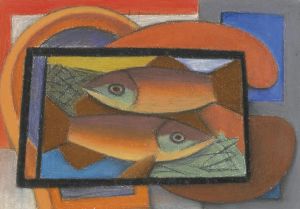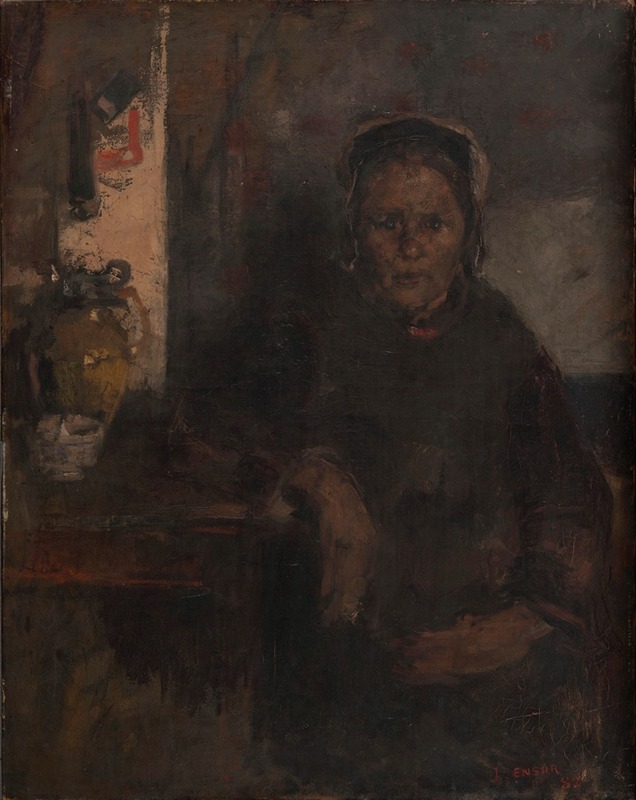
Fisherwoman
A hand-painted replica of James Ensor’s masterpiece Fisherwoman, meticulously crafted by professional artists to capture the true essence of the original. Each piece is created with museum-quality canvas and rare mineral pigments, carefully painted by experienced artists with delicate brushstrokes and rich, layered colors to perfectly recreate the texture of the original artwork. Unlike machine-printed reproductions, this hand-painted version brings the painting to life, infused with the artist’s emotions and skill in every stroke. Whether for personal collection or home decoration, it instantly elevates the artistic atmosphere of any space.
"Fisherwoman" is a painting by the Belgian artist James Ensor, created in 1880. Ensor, born in 1860 in Ostend, Belgium, is known for his unique and often provocative style that blends realism with elements of the grotesque and fantastical. His work is characterized by its vivid use of color, intricate detail, and often satirical content.
"Fisherwoman" depicts a solitary female figure, presumably a fisherwoman, standing against a backdrop that suggests a coastal environment. The painting is notable for its detailed portrayal of the woman's attire and the surrounding elements, which reflect Ensor's keen observational skills and his ability to capture the essence of his subjects with both empathy and a critical eye.
The fisherwoman in the painting is dressed in traditional clothing typical of the working-class women of the time, which includes a headscarf, a long skirt, and an apron. Her weathered face and sturdy posture convey a sense of resilience and hardiness, traits often associated with those who make their living from the sea. The background, though not overly detailed, hints at the harsh and rugged coastal landscape of Ostend, where Ensor spent much of his life and which frequently inspired his work.
Ensor's early works, including "Fisherwoman," were influenced by the realist movement, which sought to depict everyday life and ordinary people with honesty and without idealization. This painting is a testament to Ensor's ability to portray the dignity and strength of common folk, a theme that would continue to resonate throughout his career.
As Ensor's style evolved, he began to incorporate more fantastical and surreal elements into his work, often using masks, skeletons, and other macabre imagery to explore themes of mortality, identity, and the human condition. However, "Fisherwoman" remains rooted in the realist tradition, showcasing his technical skill and his deep connection to the people and landscapes of his native Belgium.
James Ensor's contribution to art extends beyond his paintings; he was also a significant figure in the Symbolist movement and had a profound influence on later avant-garde artists, including the Surrealists. His work is celebrated for its originality, emotional depth, and its ability to challenge conventional artistic norms.
"Fisherwoman" is housed in the Royal Museum of Fine Arts in Antwerp, Belgium, where it continues to be appreciated by art enthusiasts and scholars alike. The painting is an important piece within Ensor's oeuvre, offering insight into his early artistic development and his enduring fascination with the human condition.
In summary, "Fisherwoman" by James Ensor is a significant work that captures the essence of a working-class woman from the Belgian coast with remarkable realism and empathy. It stands as a testament to Ensor's early mastery of the realist style and his lifelong dedication to portraying the complexities of human life.





